3 days in Munich trips: best places for visiting
Munich is the third largest city in Germany, second only to Berlin and Hamburg in terms of population. The rich history of the city makes it very attractive for lovers of cultural tourism who prefer to visit museums, art galleries, and architectural sights. Munich’s breweries are also famous, and the Oktoberfest beer festival attracts up to 6 million people every year.
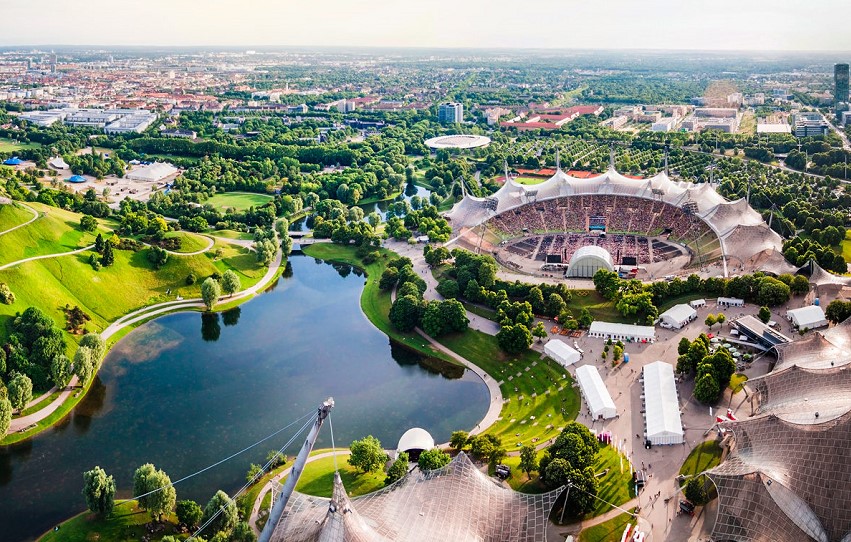
3 days in Munich: what are the interesting sights that you should visit?
Tourists sometimes do not have enough time. So if you are only for 3 days in Munich, it is not possible to visit all the city’s attractions. In this case, it is worth paying attention to those monuments that symbolize a certain era or are unique in Europe.
Of course, after you left the Munich airport, using a train in Munich central station or taxi, and settled in the hotel, you should not linger in the room.
You should visit all the museums, the National Pinakothek, and Marienplatz, where several important buildings of the city are.
In addition, it is not difficult to visit the city food market, where you can get acquainted with local culinary traditions and see what delicious food is in Munich. Also, you must taste the famous beer. In Munich, beer gardens are scattered everywhere. Because it is their best place to relax.
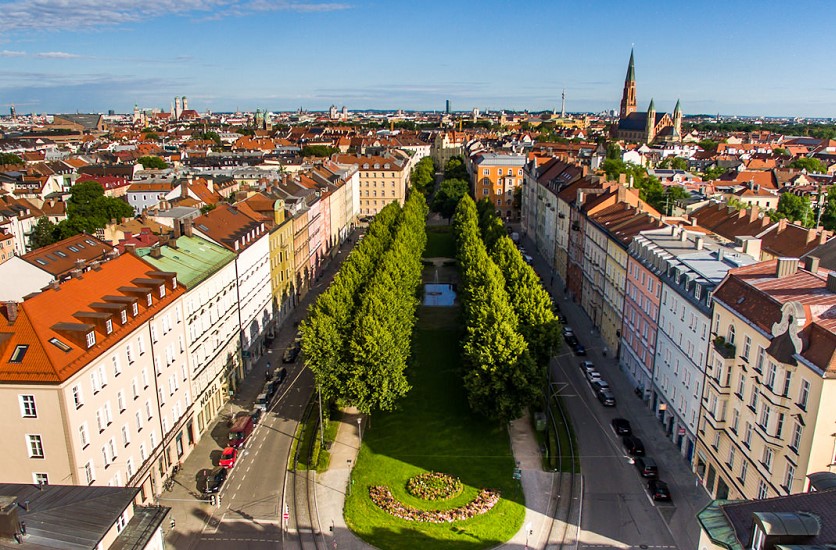
What to see in 3 days in Munich: itinerary for a free walking tour
If a traveler has only 3 days in Munich, then one of them is worth a walk through the historical city center, to which Marienplatz belongs.
From the main amazing city square, you can walk to the Cathedral of the Blessed Virgin Mary, get acquainted with its interior decoration, and take pictures of its background, as it has long become one of the most recognizable city symbols.
From the cathedral, go to the Viktualienmarkt market, and then go to one of the restaurants with traditional Bavarian cuisine. After refreshing, you can go for a walk in the direction of Odeonsplatz, which is named after the Odeon concert hall that once existed on it.
On the way to the square, look at the best tourist attractions – the National Theater and the Munich Residenz. With more time, you can explore the surroundings.

3-day Munich itinerary: where to go with children?
Those who want to visit Munich with children are very lucky because this is a great opportunity to find yourself in childhood for a few days.
If you do not know, is Munich a walkable city, you must not worry. Here the walking tour will be great because there are many streets and places for your individual, perfect Munich itinerary.
In addition to the city zoo and Legoland, next to Munich there is another amusement park – Europa-Park, which is second in popularity only to French Disneyland in Europe. Numerous interesting attractions of the park are divided into 16 thematic zones.
In addition to the country sectors, there is also the Enchanted Forest zone, the Kingdom of the Invisibles, and the Land of the Vikings. The annual number of visitors to the most popular tourist attractions reaches 4.5 million people.
And one of the most pleasant outcomes of any trip is considered to be beautiful photographs, and there are a large number of places in this wonderful city that can serve as an excellent backdrop for charming pictures.
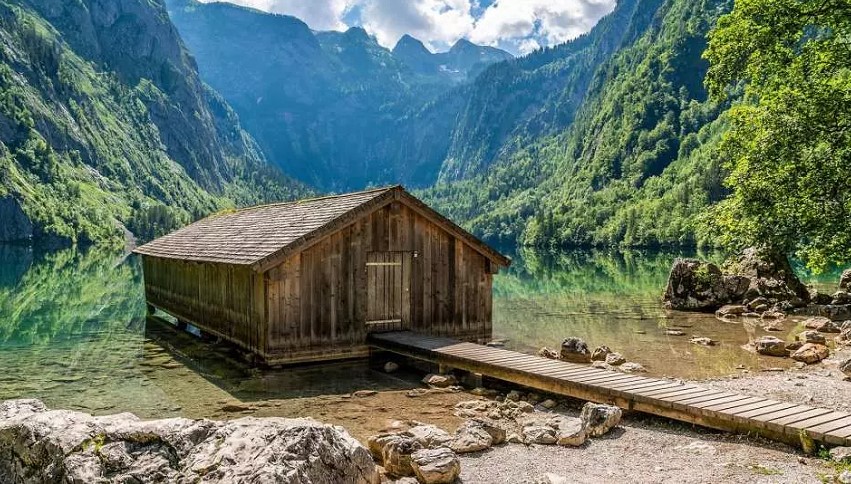
What is the best month to visit Munich?
In spring and summer, as well as during dry autumn, a great place during your Munich itinerary can be the alleys of the English Garden or the rotunda of Hofgarten park. The interiors of the surrounding hunting castles of the Bavarian dukes are also a great idea for a free walking tour.
Marienplatz square is especially beautiful in winter at dawn, when the first rays paint the old buildings in golden color. You must visit this place during your three-day Munich itinerary. And of course, do not forget to visit Christmas markets. There you feel like in a fairy tale.
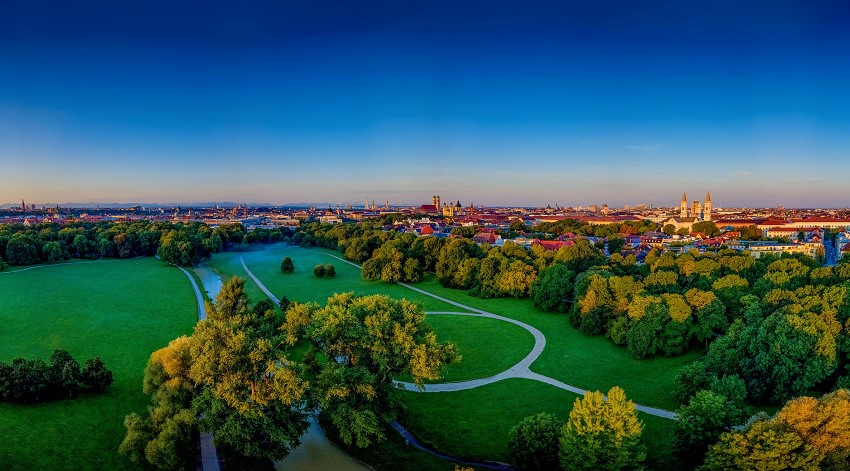
The first day of the Munich itinerary
If you think about is 3 days enough for Munich, let’s walk in this article together. And you can see that you do not have much time at all.
Munich itinerary to the Palace of Justice
This eclectic building, whimsically combining neo-baroque and renaissance features in its appearance, was built in 1897 for the needs of the Bavarian Ministry of Justice.
The Palace of Justice is one of the architectural dominants of Karlsplatz square and is located near the Charles Gate.
It was in the Palace of Justice that a high-profile trial of members of the White Rose student organization, which operated in Nazi Germany and aimed at overthrowing Hitler, took place.
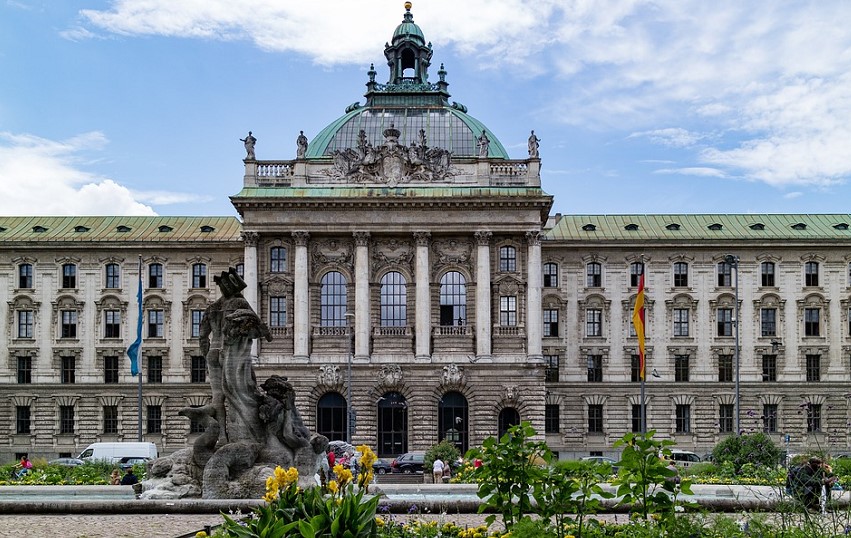
English garden
This urban park is world-famous for its rich history and numerous attractions located within it. As one of the first public parks in Europe, the English Garden surpasses both New York’s Central Park and London’s Hyde Park in area.
The most popular attractions of the English garden include the Chinese Tower, built on the model of the Great Pagoda in London’s Royal Park, and Monopter – an ancient Greek-style rotunda, the domed roof of which is supported by ten Ionic columns.
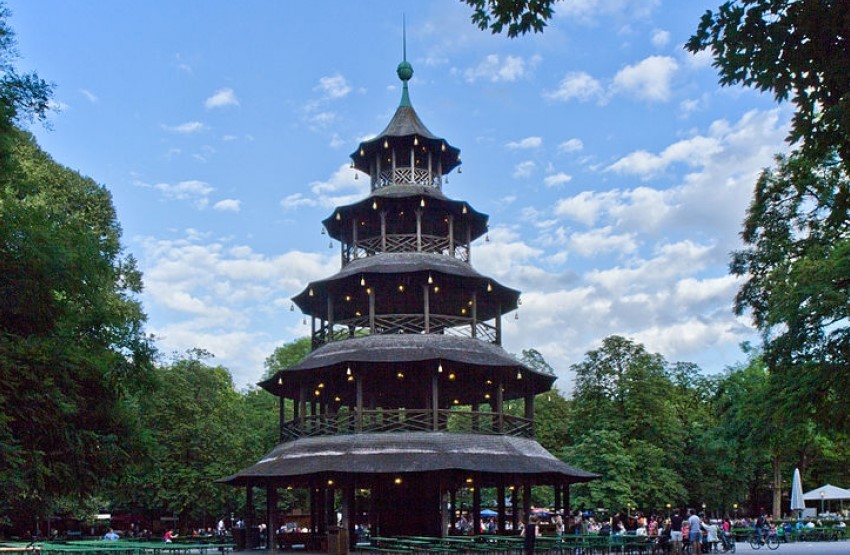
Hofgarten park
This Baroque park was founded in 1613 by the personal order of Emperor Maximilian the First. Although the park is inferior in the area to almost all other green areas in Munich.
The main entrance to the park is the gate facing the facade of the Theatinerkirche Catholic Church. However, the main attraction of the garden, which is worth visiting, is the Diana Pavilion, located in the center.
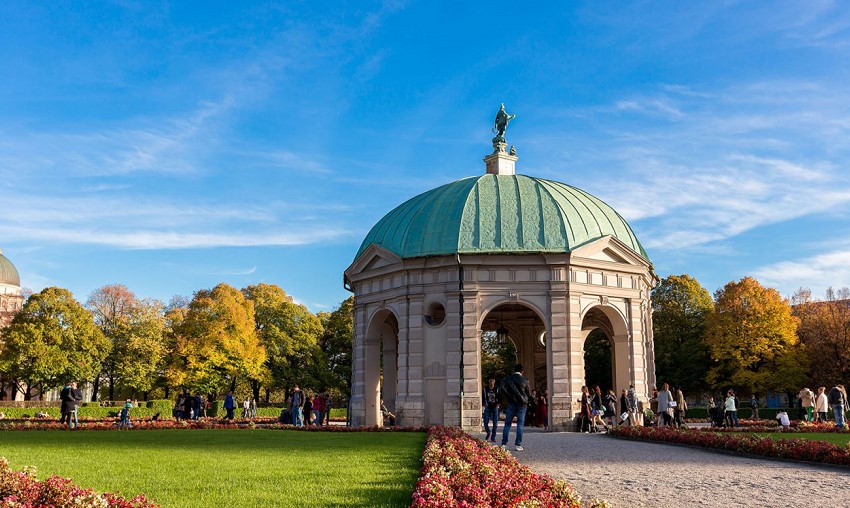
Visit the restaurant Hofbräuhaus during the first-day trip
The Hofbräuhaus restaurant has earned worldwide fame thanks to a long-standing brewing tradition that has been maintained in the city for over four hundred years. The former ducal breweries are located in the city center on Platzl, near Marienplatz.
The brewery, built in 1607, was opened to the public in 1828, in 1897 a restaurant was opened in its place, which was completely renovated in 1958.

Viktualienmarkt
One more interesting place where you must go during your visiting Munich. Viktualienmarkt is an old food market, open six days a week except for Sundays and bank holidays. The market was opened as a replacement for the main city bazaar at Marienplatz in 1807 by decree of Maximilian l.
The name of the market comes from the Latin root victus, meaning products and stocks. This name testifies to the fashion for Latin names that existed among the Bavarian bourgeoisie in the XlX century.
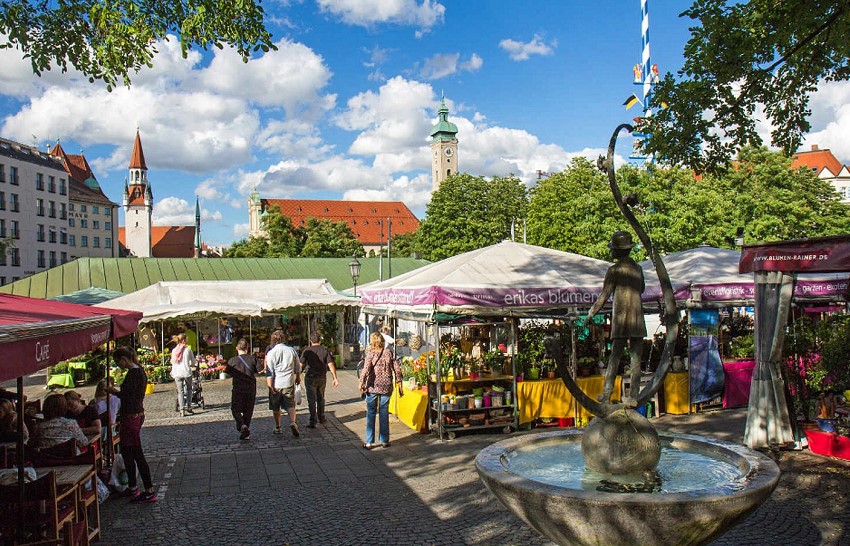
Munich itinerary to the Allianz Arena
The Allianz Arena is a well-known football stadium located in the north of Munich. Initially, the arena was jointly owned by the football clubs Bayern and 1860 Munich, but later Bayern bought out the partner’s share.
The capacity of the arena for home matches is 75,000 people and for international matches 67,812.
However, the stadium management strives to make it useful not only for the fans: for example, the stadium has two daycare centers, LEGO World and Bayern’s branded sports store.
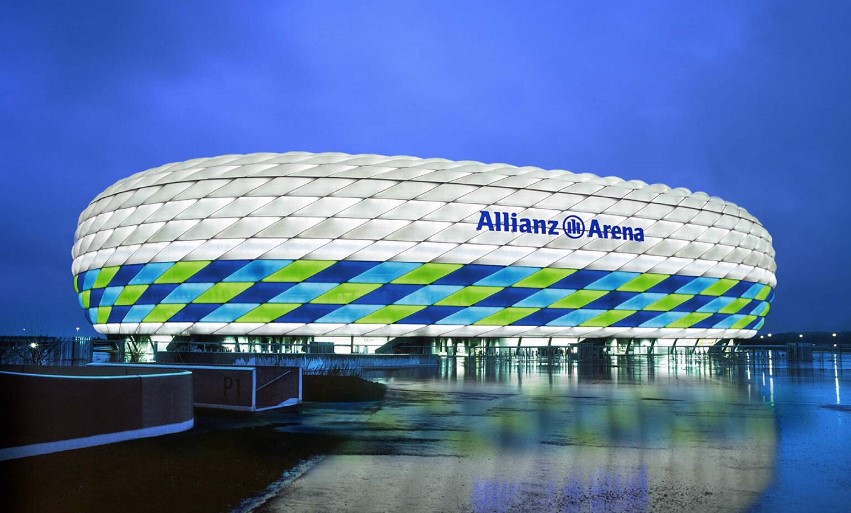
Visit the Olympic Park during the first-day trip
The Park appeared in Munich on the eve of the 1972 Summer Olympics. Renowned architects and engineers from the Günther Behnisch Bureau had a hand in its creation.
The main objects of interest to tourists include the Olympic Stadium, the Olympic Arena with an Olympic tower, as well as the Olympic Village, and the Park with a lake and a mountain.
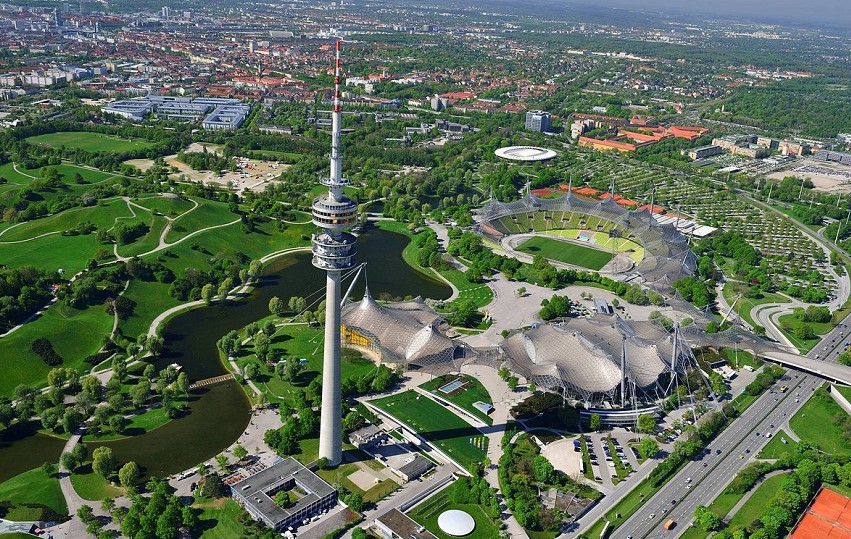
Neuschwanstein castle
Neuschwanstein castle occupies the twentieth line in the ranking, not so much because of its small importance, but for geographical reasons. Neuschwanstein castle has located some distance from Munich in the vicinity of the town of Füssen.
Even though the Neuschwanstein castle was formally built in 1869 for King Ludwig II, at its base, there are two ancient fortresses, almost destroyed by the beginning of the nineteenth century.
There are many nice cafés nearby Neuschwanstein castle. Here you can see amazing views.
Glyptothek
Glyptothek Munich is one of the most popular city museums. The Glyptothek and state collection of ancient Greek sculptures are important places for visiting during your first day Munich itinerary.
The historic building of the Glyptothek is on Königsplatz square, and it was built in 1815 by order of Crown Prince Ludwig.
An absolute value and a true gem of the collection is the perfectly preserved sculptural composition “Faun Barberini”, created presumably in 200 BC.
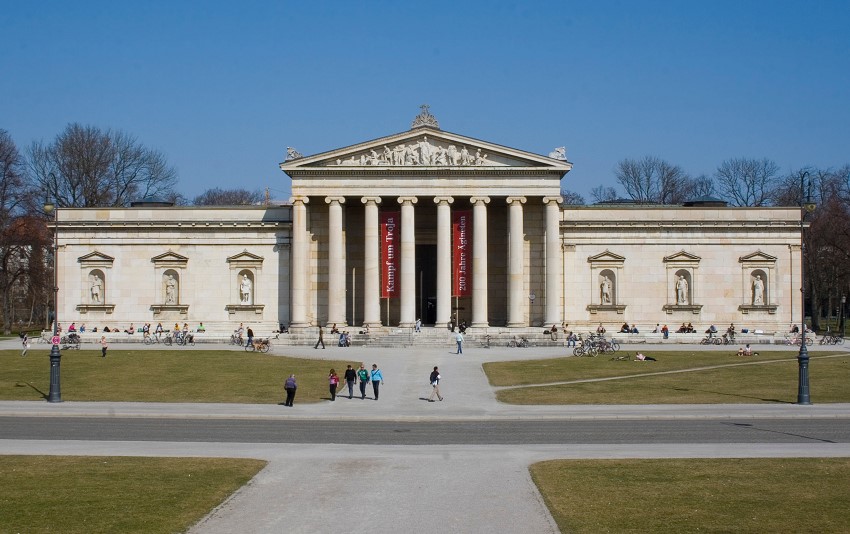
The second day of the Munich itinerary
Moving on to the second day of travel in Munich. It is no less intense and interesting. Today you can see that 2 days in Munich is not enough.
Memorial Museum Dachau
The Dachau Memorial Museum was established in 1965 on the initiative of former prisoners and with the direct participation of the Bavarian government. The atrocities committed by Nazi criminals within the walls of the Dachau concentration camp, on the site of which the museum was created, were the reason why the word Dachau became a household word.
During the existence of the Dachau concentration camp, about two hundred thousand people passed through it.
Blutenburg Castle
Blutenburg Castle was founded in the XIII century, but the outlines, close to modern ones, were acquired in 1431 by the future Duke Albrecht III.
It is noteworthy that the place on which this modest hunting castle is built has a very ancient history.
The first settlements on the site of the castle appeared more than 4000 years ago, which is confirmed by the ancient burials. Today the castle belongs to the Munich International Youth Library, so access to its territory is open to everyone.
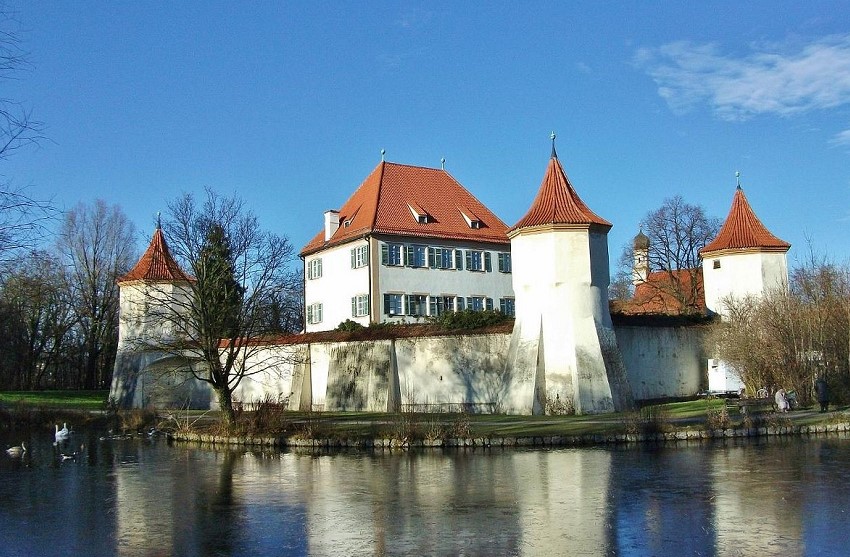
Schleissheim Palace
Schleissheim Palace is a typical palace and park ensemble of the Baroque era.
Built in the middle of the 15th century, the ducal residence is a typical example of the so-called “small Versailles” special types of suburban ensembles, the distinguishing feature of which is the rigor of forms combined with the richness of the ornament and thoughtful details, which include, among other things, furniture.
However, even if you cannot boast of love for parks, it is still worth visiting the palace during your Munich itinerary.
Nymphenburg Castle
Nymphenburg Castle is one of the most famous royal residences in Europe, which attracts a huge number of tourists every year. The construction of this luxurious complex of historical buildings was completed in 1675. Of course, over its more than 300 years of history, the castle has been repeatedly expanded and rebuilt.
The most interesting parts of the castle are the lacquer cabinet, the gallery of beauties with portraits of 35 of the most beautiful women in Europe, and the large hall, made in the rococo style.

Cathedral of the Blessed Virgin Mary
The Cathedral of the Blessed Virgin Mary in Munich ascended the city in 1525, although its construction began in the middle of the 15th century. It took such a long time to erect a monumental building, the length of which is 109 m, and the maximum height is 100 meters.
Among the many legends associated with the construction of the cathedral, the story that its architect agreed with the devil so that he would not interfere with the construction of the temple deserves special attention.
This legend is confirmed by the imprint of a man’s foot in a boot, which curious travelers can find on one of the slabs in the inner hall of the cathedral.
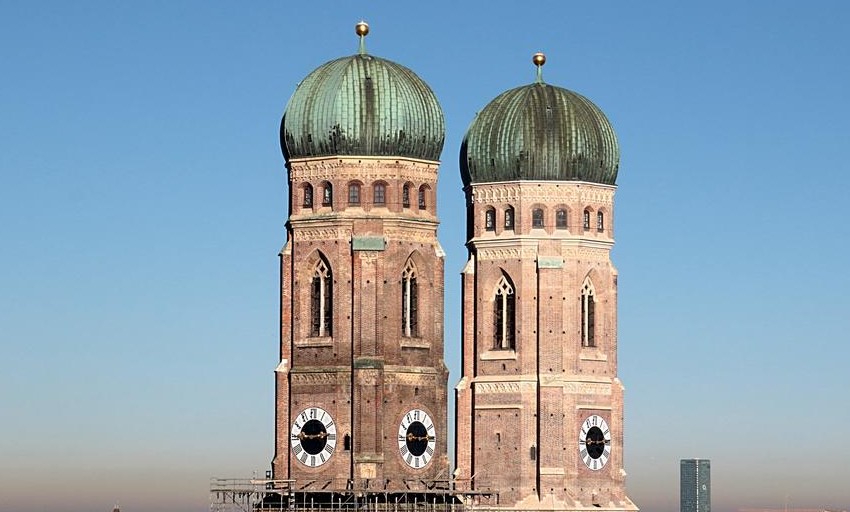
Visit Munich in 3 days: Azamkirche Church during your walking tours
The Azamkirche is officially called the Church of St. John of Nepomuk. This religious building was built in 1746, which means that its interior decoration belongs to the late Baroque style.
It is noteworthy that the church was built not to order, but according to the personal desire of the brothers of architects, to save their souls.
However, the brothers also did not forget about receiving aesthetic pleasure, richly decorating the internal halls of the church, and arranging extensive glazing in the main facade, through which they could see the altar of the temple from the windows of their house.
Church of St. Peter
St. Peter’s Church in Munich is better known by the popular name “Alter Peter”, which can be roughly translated as Old Peter. Today, Peter’s church is one of the oldest churches in the city.
Construction began in the 11th century, and a radical restructuring was carried out as early as 1284.
At the beginning of the 15th century, a strong fire almost destroyed the temple, and as a result of reconstruction, its appearance changed greatly from Romanesque to Gothic.
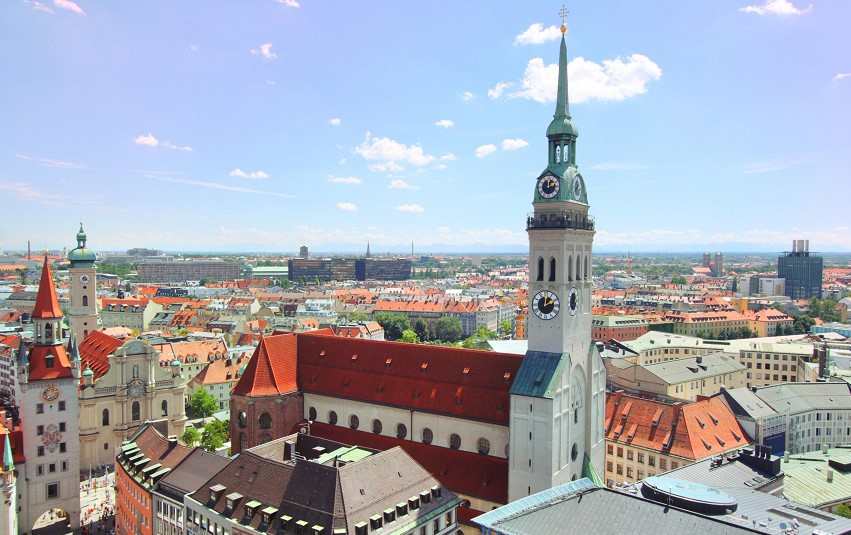
Bavarian State Opera
The Bavarian State Opera was founded in 1653. Most of the performances take place on Max Yosef Square, in the building of the National Theatre, and the total number of performances reaches 350 per year.
The Bavarian Opera has been the venue for the premieres of several operas by Wagner, Mozart, and Strauss.
The third day for the Munich itinerary
Here we come to the third day of our stay in Munich. They went by very quickly, didn’t they? Now you know the answer to the question is 3 days enough for Munich. Someone already wants to go on a journey further, others would like to stay here even for a day. But in any case, Munich has already taken a piece of your soul.
3 days in Munich: visit the New Town Hall
This building is part of the ensemble of the most important square in the city – Marienplatz. The construction of the entire complex of buildings, which also includes a tower 85 m high, was completed in 1908. You should pay particular attention to the large tower clock, on the platform in front of which, a performance is played daily at 11 am with the participation of 32 figures.
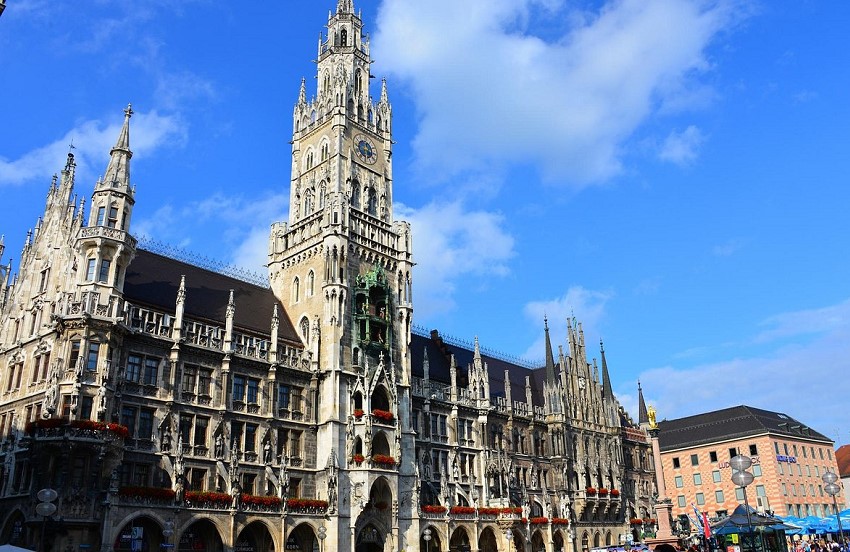
Old Town Hall
The Old Town Hall was first mentioned in 1310, but the great hall was not built until 1394. Of noteworthy events, one can recall a lightning strike on the roof of the Old Town Hall in 1460. Of the events closer to our time, it is worth mentioning the speech of Goebbels, delivered from the balcony of the town hall on November 9, 1938.
It was this speech that served as the impetus for a series of anti-Jewish pogroms that went down in world history under the name “Kristallnacht”.
Munich residence
For more than 500 years, the Munich residence served as the main abode of the rulers of the Bavarian land. This vast complex of buildings includes ten courtyards and is divided into three main complexes: the Royal Chambers, the State Hall, and the Old Residence.
During its existence, the palace complex was rebuilt many times and as a result acquired a very eclectic look, combining elements of the Renaissance, Baroque, Rococo, and Classicism.
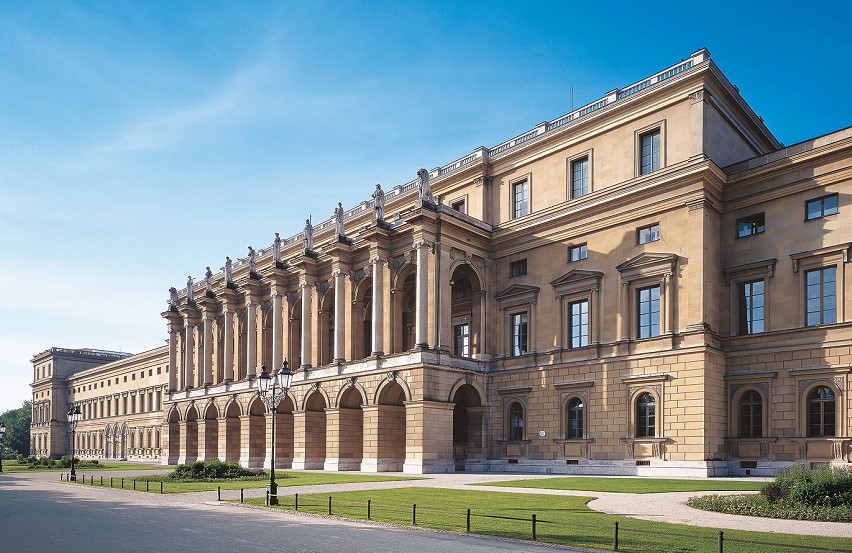
3 days in Munich: visit the Marienplatz
Marienplatz is one of the main attractions of Munich, as well as the center of an extensive pedestrian zone and an important hub for most tourist routes. Attractions such as the New and Old Town Hall are on Marienplatz, and the Frauenkirche and Viktualienmarkt city markets are in its vicinity.
Bavarian National Museum
The Bavarian National Museum has been located on Prinzregentenstrasse since the end of the 10th century in a building built in 1899 in a very eclectic style.
The internationally recognized collection has artifacts that testify to the history of the Middle Ages and also has modern art collections.
The collection contains works by such famous masters as Adam Kraft, Ferdinand Tietz, and Ludwig Schwanthaler.
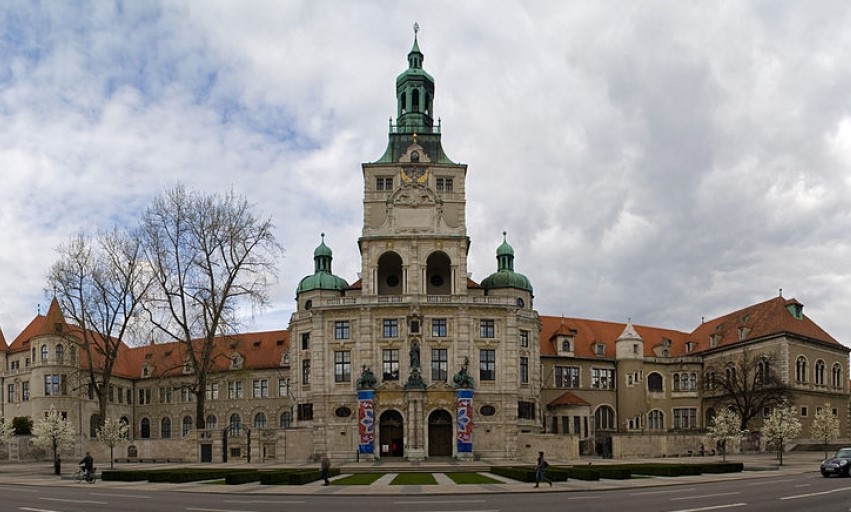
Pinakothek
Munich has a worldwide reputation as one of the world’s finest collections of art. The collection contains works by masters of both medieval and modern times. The most famous are such works as “The Four Apostles”, “The Paumgartner Altarpiece” and “Self-Portrait” by Albrecht Dürer.
In addition, the collection includes works by Cranach the Elder, Hans Holbein the Elder, and Hans von Aachen.
Oktoberfest
When you are going to visit Munich, do not forget about this festival. Oktoberfest attracts tens of thousands of tourists to the beer halls and streets every year from all over Europe, but 70% of its visitors are still Bavarians.
For 200 years of history, the beer festival has become an integral part of the autumn cityscape. The most colorful event of the holiday is the solemn procession of the owners of beer tents, with whom the festival opens. Special attention is paid to the opening of the first beer barrel.

Munich Zoo Hellabrunn
Munich Zoo Hellabrunn is popular not only with children but also with numerous adult tourists who stay even for 3 days in Munich. The park, which opened in 1911, was the first in the world where living conditions were close to nature, that is, many animals were kept in spacious enclosures, and not in cages.
The zoo is considered one of the most visited attractions in the city, as about 1.8 million visitors come to it every year.
Legoland
Legoland is considered one of the most suitable places to go from Munich for a day, as it is located 130 km from the city center. You can ride a toy train through the park, and look at numerous European landmarks built from Lego and many movie scenes, including Star Wars.
BMW Museum
The museum takes first place in the ranking due because the history of this corporation embodies all the best qualities of the German economy, industry, and science.
Of course, this is one of the most famous German brands, symbolizing the aspiration of the Germans for the future. The museum, located near the company’s headquarters, was opened after renovation in 2008 and now welcomes up to 250,000 visitors a year.
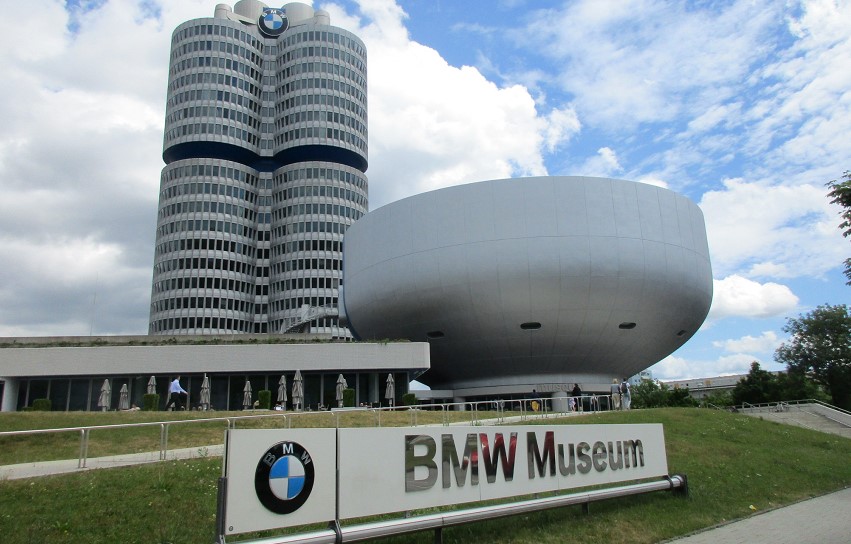
3 days in Munich: transport, accommodation, meals
When you leave Munich airport, you need to think about accommodation and food. It is worth considering this issue in a little more detail.
Public transport in Munich is the metro, trains, trams, and buses. The most used travel tickets for public transport are single and daily. The Munich city pass is valid for all modes of transport. The fare depends on the number of zones within which you travel.
Munich is divided into 4 ring zones. Each zone is additionally divided into rings. Almost all attractions are within the inner zone (Innenraum). The optimal ticket for the transport is a day pass (Single-Tageskarte).
It pays off if you plan to use transport more than 1-2 times.
You can spend the night in Munich anywhere. Both in the center and on the outskirts. But the most convenient hotels for the traveler are located near the main railway station. There are also several good and clean hostels where you can rent a bed for the night.
The station is a 10-minute walk from the historic center. Lots of eateries and supermarkets around. There is an information center and ticket offices. And, of course, it is convenient to travel from here to anywhere in Germany.
If you are interested in whether is Munich cheap for tourists, we can’t say positively. It is quite an expensive city. A bed in a dormitory room in a hostel costs €30. For foods, you need to allocate at least €40 per day. If you want to eat more varied, then get ready to spend at least €60 per day. Each tour costs an average of €4.
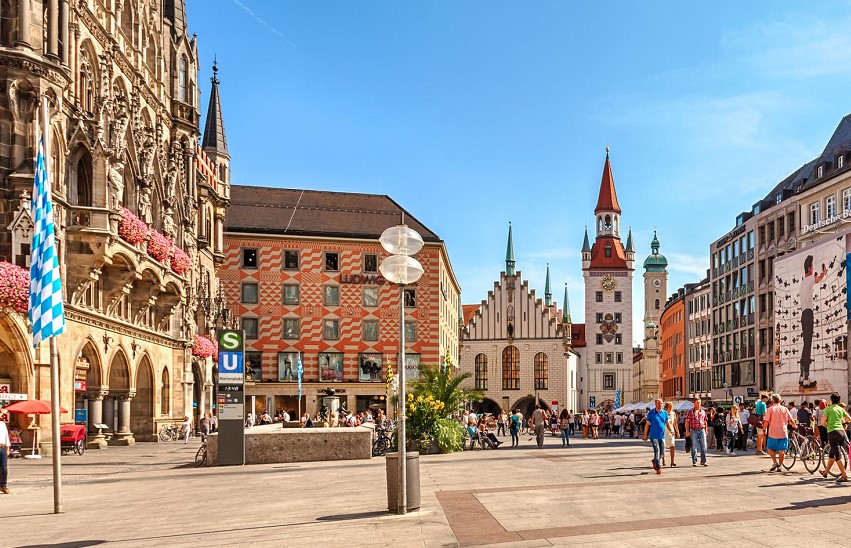
Where to eat in the historic center of Munich?
The most popular place is the beer house “Hofbräuhaus”. It’s always open and full of people. There are many restaurants around it, taking away tourists who did not fit in the pub. This place does not differ in comfort and cheapness. However, it’s colorful here.
If you want to eat in the company of locals, not tourists, and a more comfortable place, you need to take a walk in the district of the Viktualienmarkt market, south of Marienplatz. You can also eat outdoors here.
Also, worth noting is the English Park. In the middle of it, around the Chinese pagoda, there is a whole open-air food town. Of course, good weather is needed here for a comfortable lunch.
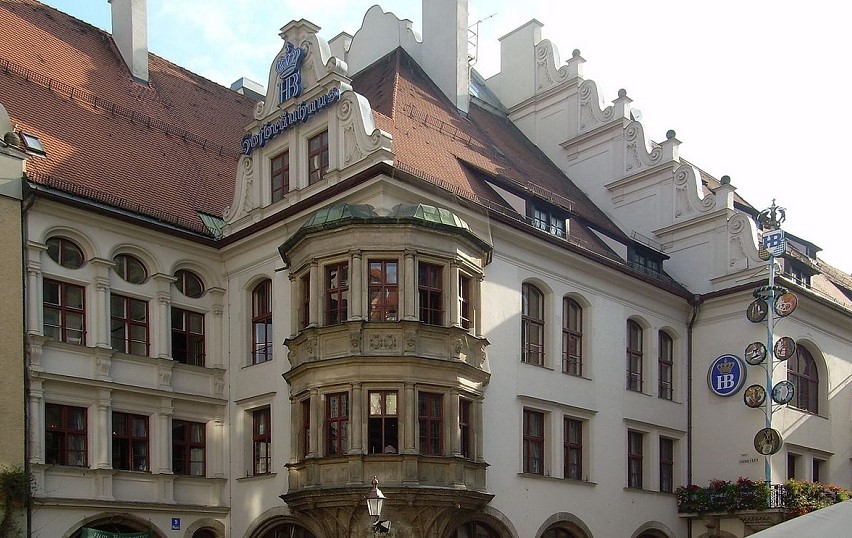
How to save money in Munich?
- If possible, do not take tickets to Munich at the end of summer, on the dates of Oktoberfest and New Year’s Eve. This is the peak of the tourist season, and you overpay for the flight. Better plan your trip in the spring.
- If Oktoberfest is the purpose of your trip, book your accommodation in Munich 6 months or even earlier: closer to September, not only the prices go up, but the free accommodation options simply run out.
- Shop for groceries and cook your dinner. If you rent an apartment with a kitchen, you can have light dinners at home or make sandwiches to go for the day. It is cheaper than a snack in a café.
- Order set meals. During the day on weekdays in Munich eateries, restaurants, and cafés you can dine for 5.5-8 €.
- To travel around Bavaria, buy a Bayern Ticket. The ticket entitles you to an unlimited number of trips on all modes of transport in Bavaria. There are day and night tickets. The cost of one day passes from €25, the night from €23. A day ticket for 5 costs €53, a night ticket €39.
- Buy a single ticket to 5 of the best museums in Munich (Alte Pinakothek, Neue Pinakothek, Pinakothek der Moderne, Brandhurst Museum, and Shack Gallery) for 1 day for €12 or 2 days for €29. It is more profitable than paying for the entrance separately.
- Go to Munich’s Pinakotheks and the Shack Gallery on Sunday: on this day, the ticket costs only €1.
- Get yourself a CityTourCard. It entitles you to free travel on all modes of transport and discounts at 80 museums and tourist attractions in and around the city.
Conclusion
Munich is beautiful at any time of the year. In every corner, you can find pieces of antiquity and modernity. That is why hundreds of tourists come here every year. Indeed, in the city of contrasts, it is so easy to find a breath of fresh air and have a good rest.

Hello reader. My name is Charlotte Noris and I am sure that you will definitely enjoy my blog. Do you know why? All because on the pages you will see bright and colorful photos, as well as useful information. My husband and I are freelancers, so we can travel at any time of the year.
For myself, I most often plan tours in advance, but it also happens that the trip turns out to be spontaneous when I see an interesting place and a nice price. At the age of 35, I have visited more than 30 countries and do not plan to stop there. I want to visit all continents and the most secret corners of our planet.

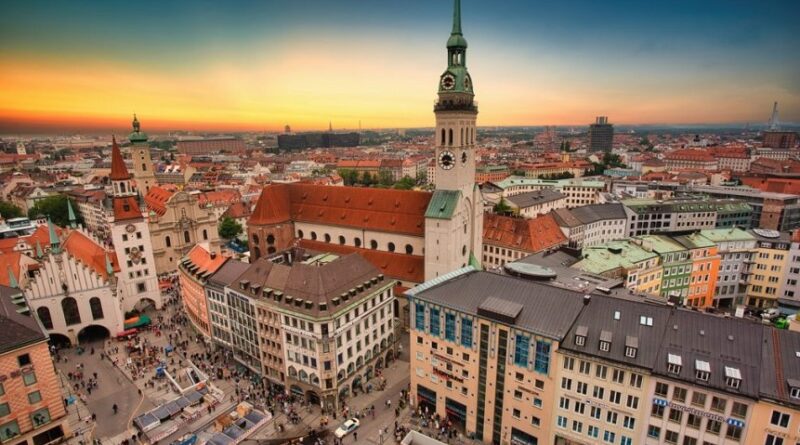
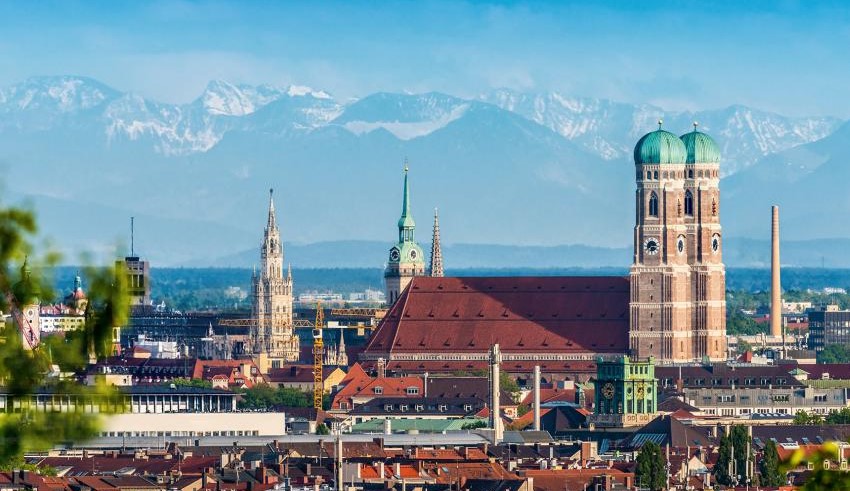
Pingback: How to build a super Itinerary for germany - top 5 recommendations
Pingback: Best time to visit Cyprus: best conditions and list of outdoor activities for your enjoy - 10 top tips
Top site ,.. amazaing post ! Just keep the work on !
Somebody essentially help to make seriously posts I would state. This is the very first time I frequented your web page and thus far? I surprised with the research you made to create this particular publish extraordinary. Great job!
This is very interesting, You are a very skilled blogger. I’ve joined your feed and look forward to seeking more of your magnificent post. Also, I have shared your site in my social networks!
Top site ,.. i will save for later !
Keep functioning ,fantastic job!
Hello.This article was really remarkable, especially because I was browsing for thoughts on this issue last Thursday.
I have learn some just right stuff here. Definitely worth bookmarking for revisiting. I wonder how so much attempt you set to create one of these great informative web site.
Thank you for any other wonderful article. Where else may anyone get that kind of information in such a perfect way of writing? I have a presentation next week, and I’m on the look for such info.
Lovely site! I am loving it!! Will come back again. I am taking your feeds also.
You made some decent points there. I seemed on the web for the difficulty and found most people will go along with together with your website.